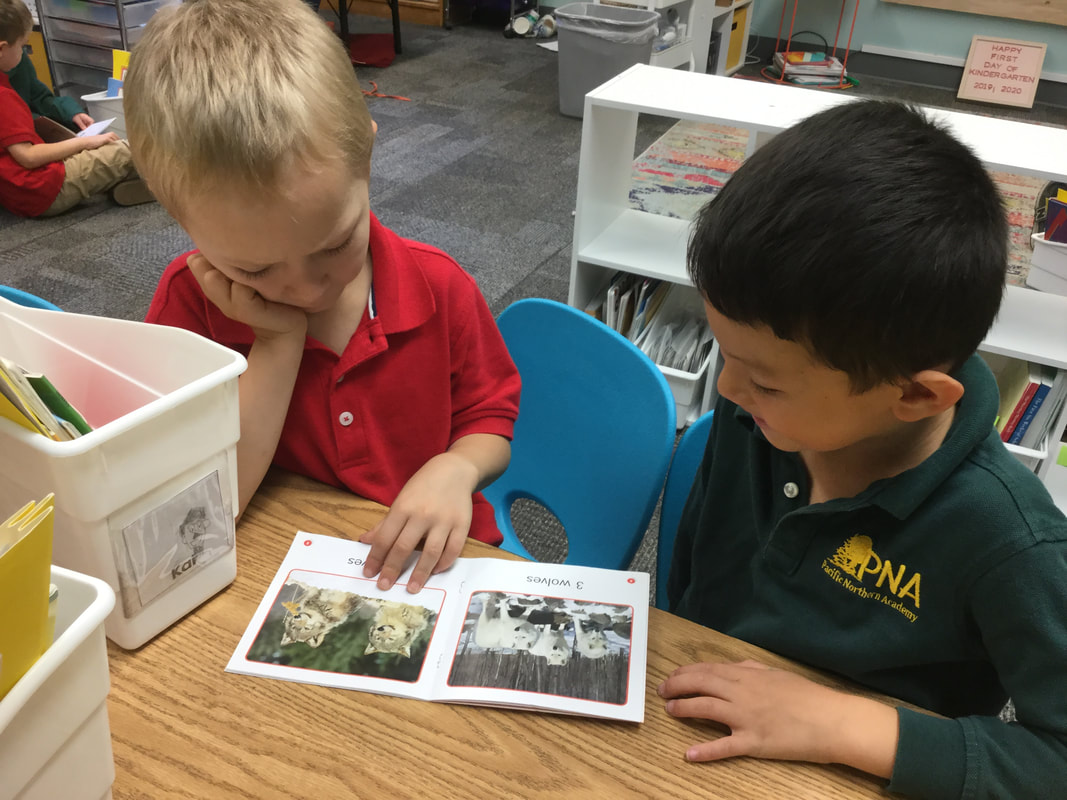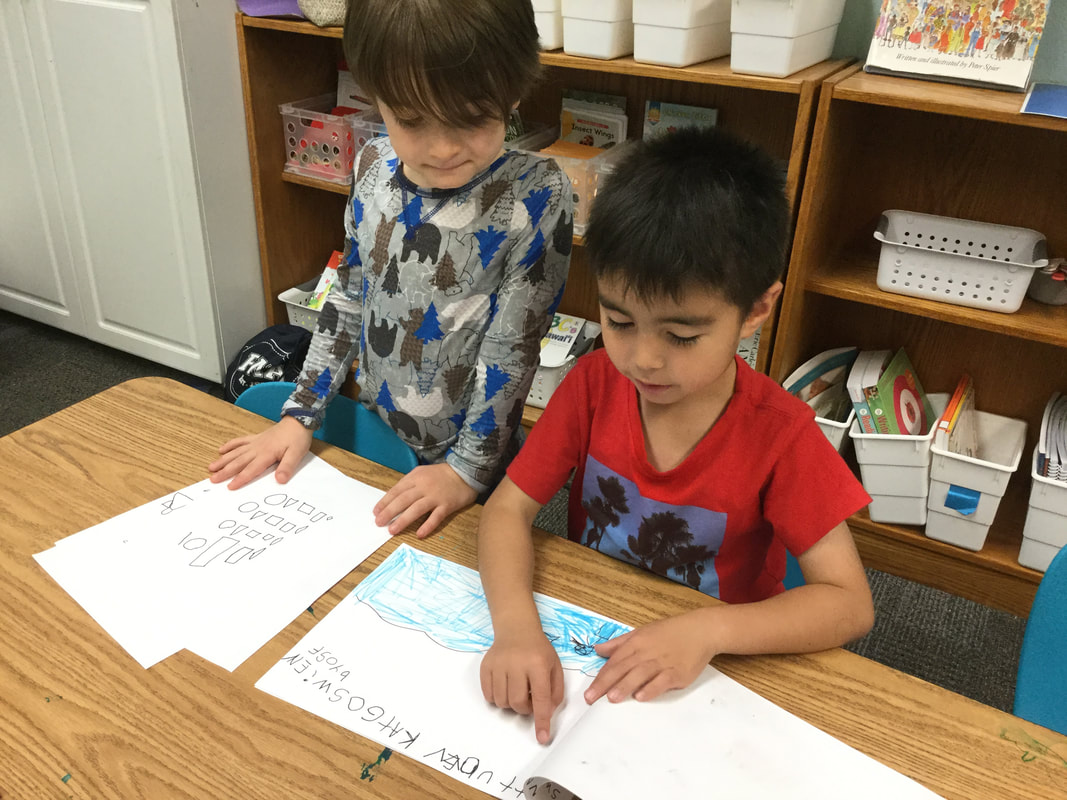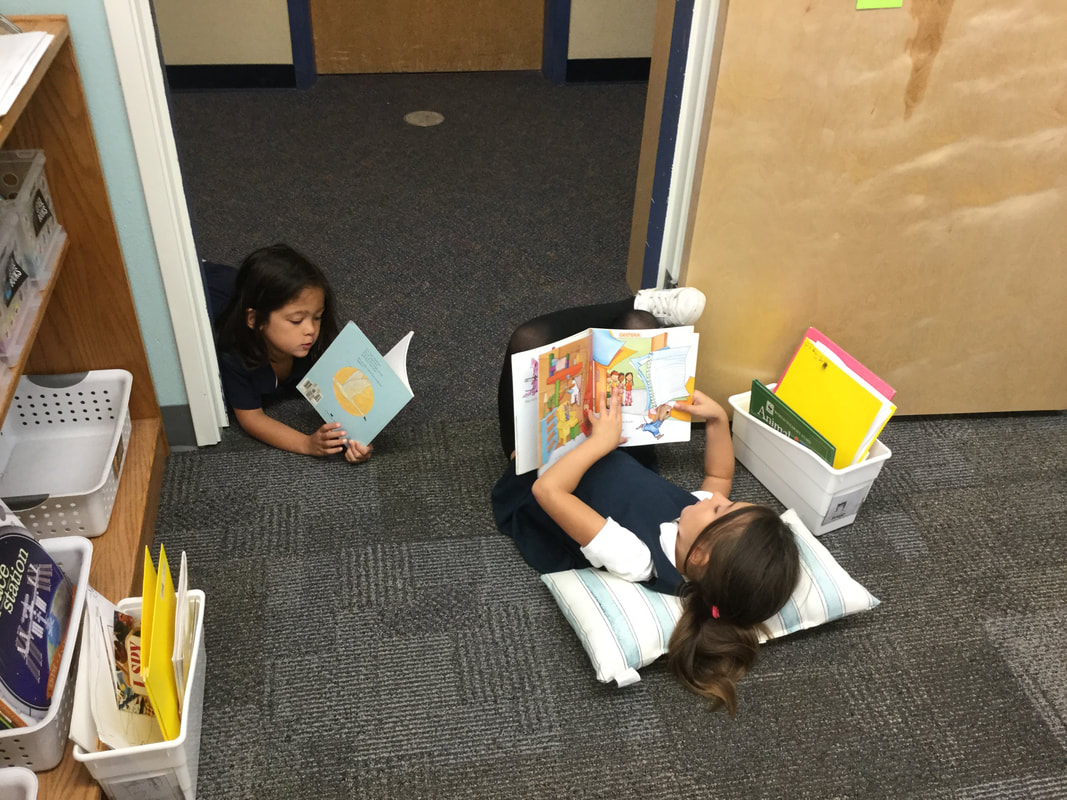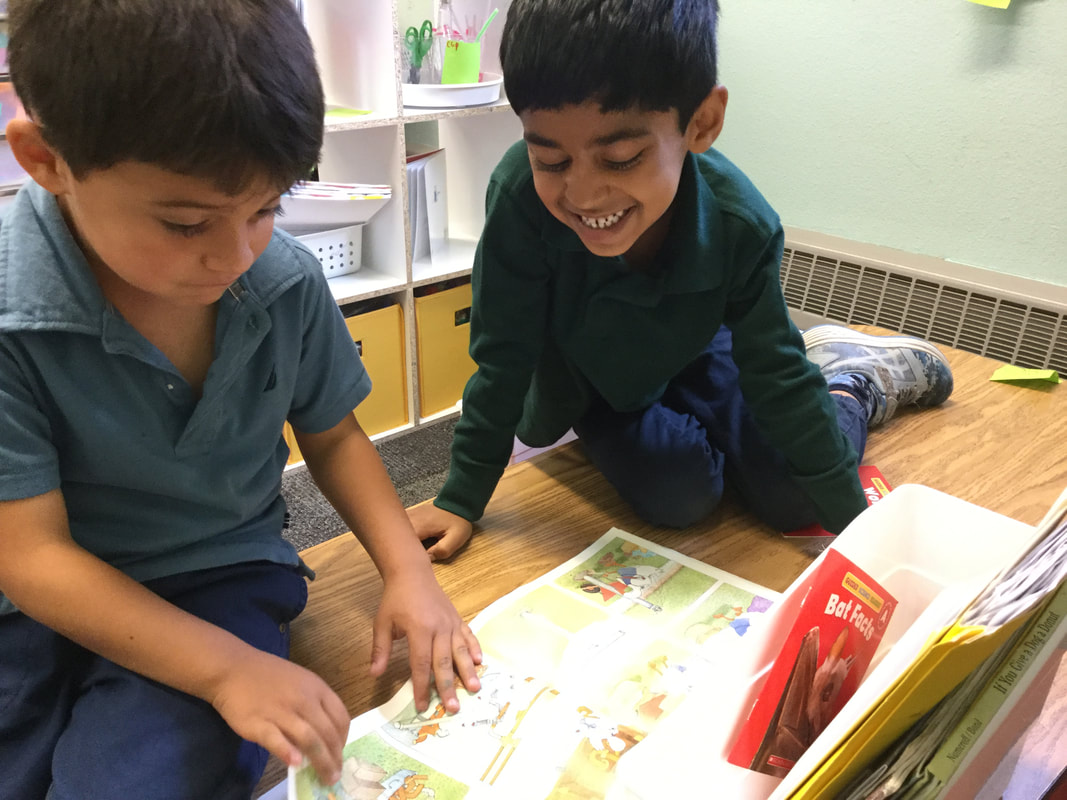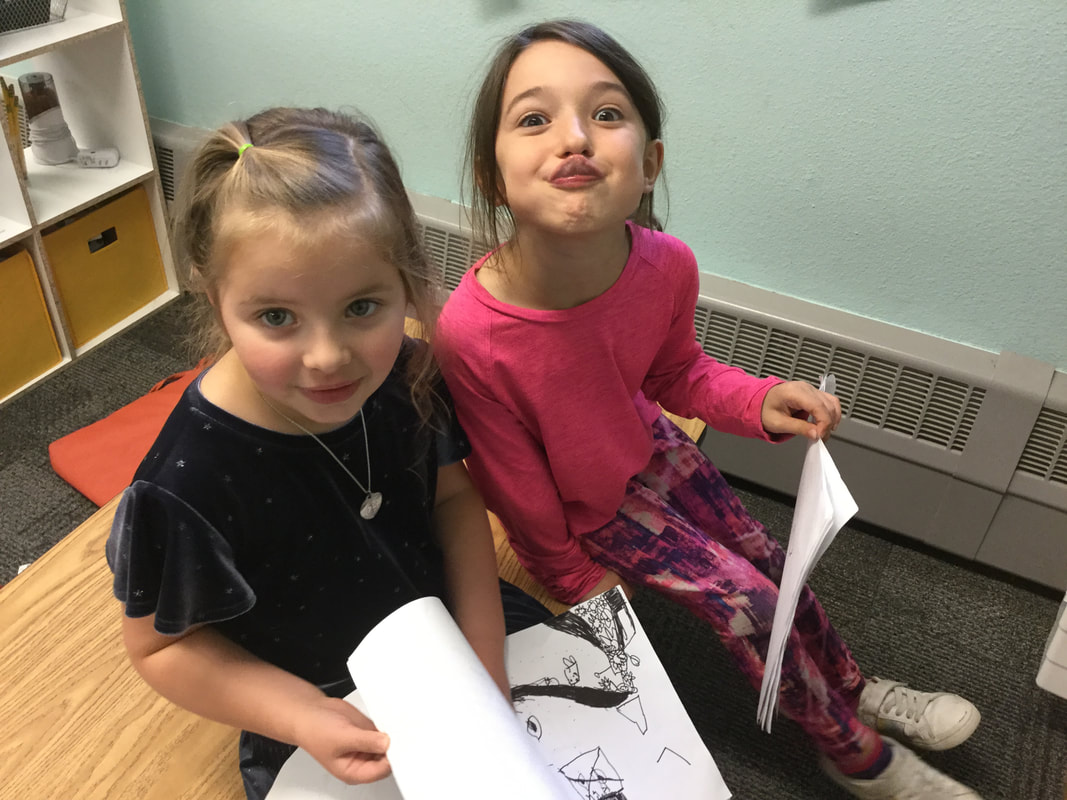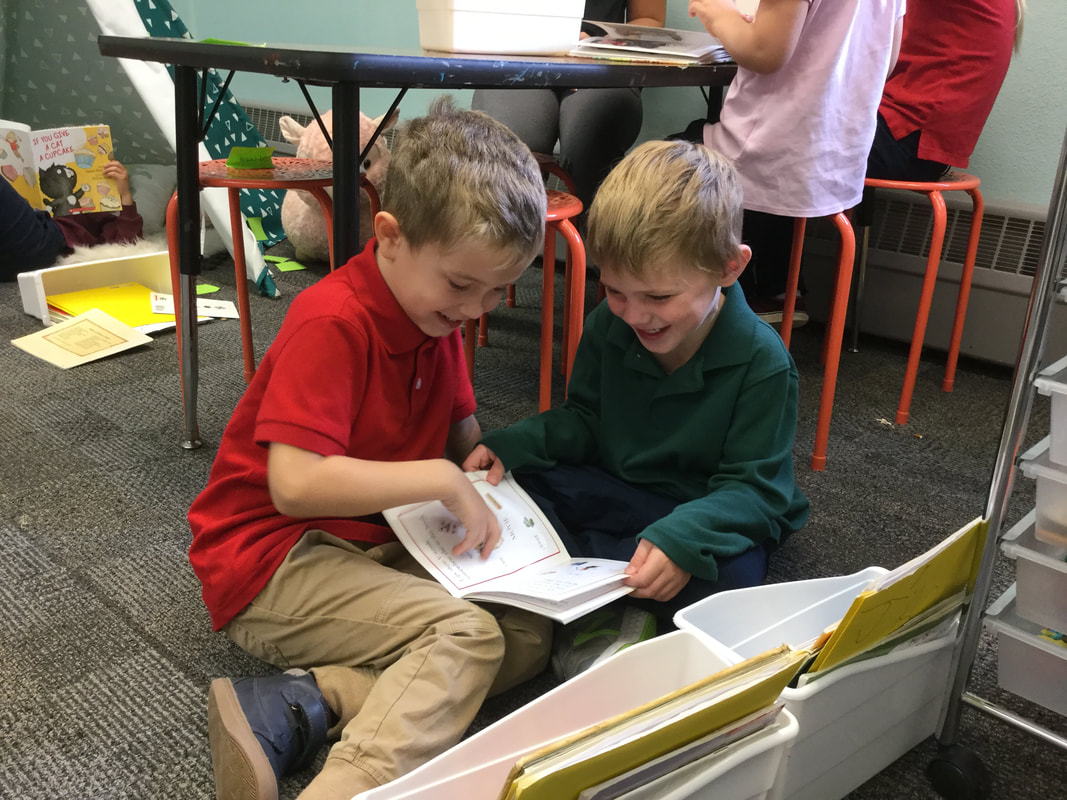Early literacy instruction is designed to help children learn to decode text (i.e. read words) and also enjoy literature.
One way that we make reading enjoyable is by bringing the books we read to life. Early in the year, this includes using character voices for storybooks or reading like a teacher for nonfiction books. Students engage in retellings with character puppets or reenactments of the story, in which they are the characters.
As the year progresses, a student’s understanding of the story is stressed. If something sad is happening in the story, students are encouraged to use a sad voice. Is a character mad or upset? Mad voice. Students learn that the way they read should reflect their understanding of the story, what is happening page to page. Our voices reflect the actions and feelings of the characters. When Super Mouse is flying, it’s exciting and we read it excitedly. When Super Mouse falls, he’s upset, and our voice indicates that. In this way, by knowing what’s happening and making our voices reflect that, we bring the story to life and make it more fun and interesting to listen to, more enjoyable to read. (We’re also encouraging comprehension and fluency, two important skills for reading, in a fun way.)
Things you can do to encourage this at home:
- Model bringing the story to life by doing it yourself when you read to your child
- Ask your reader how the character feels and how you can show that with your voice; reread parts together
- Make up character voices together
- Retell a story after you read it, or even act it out together

